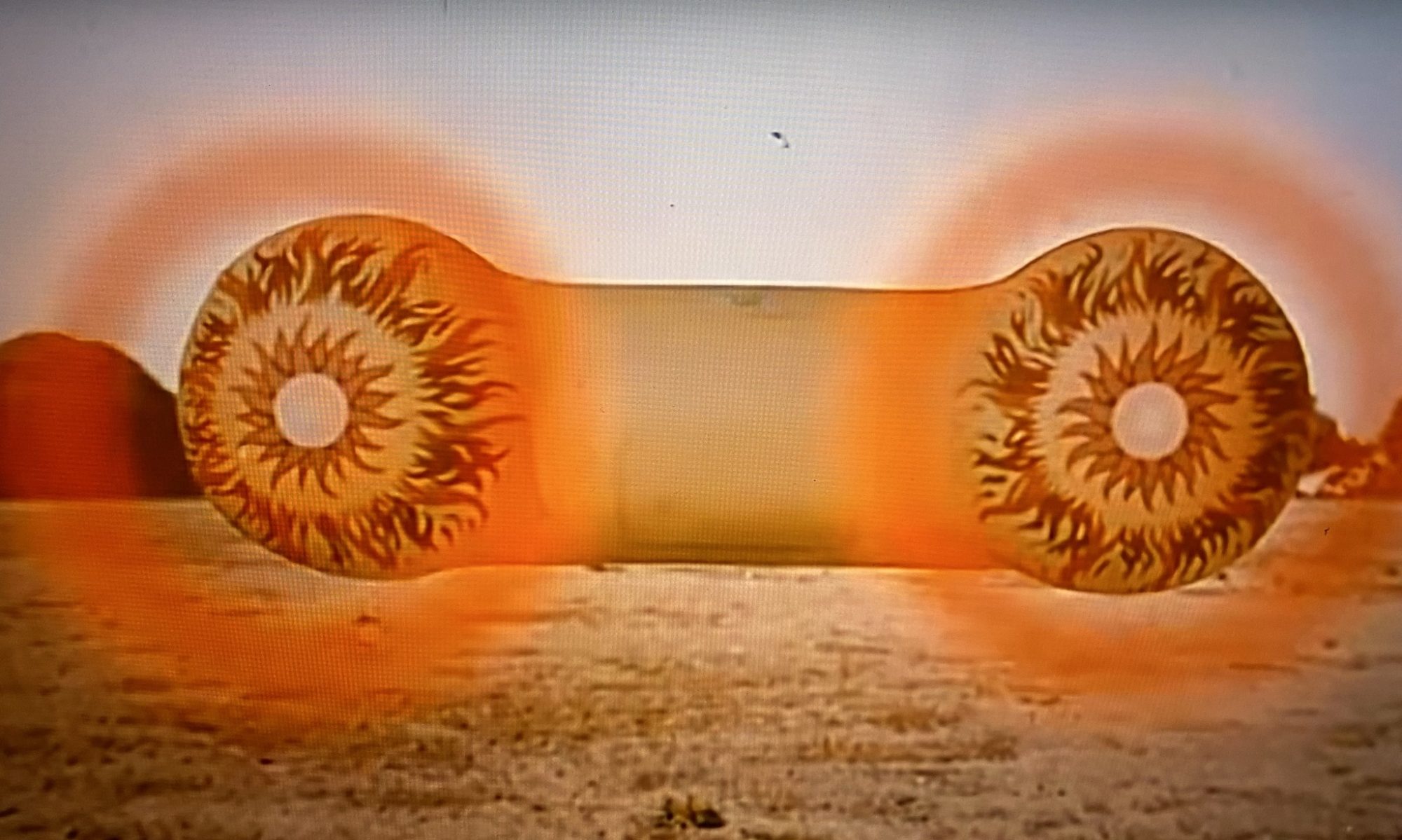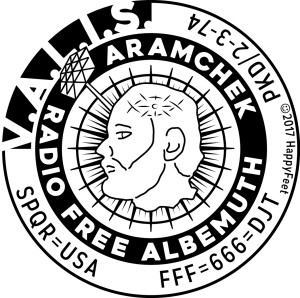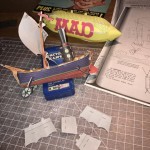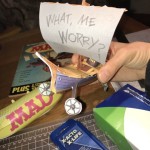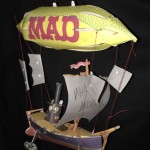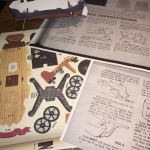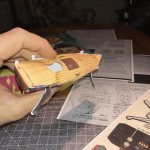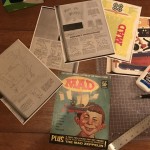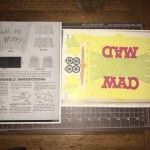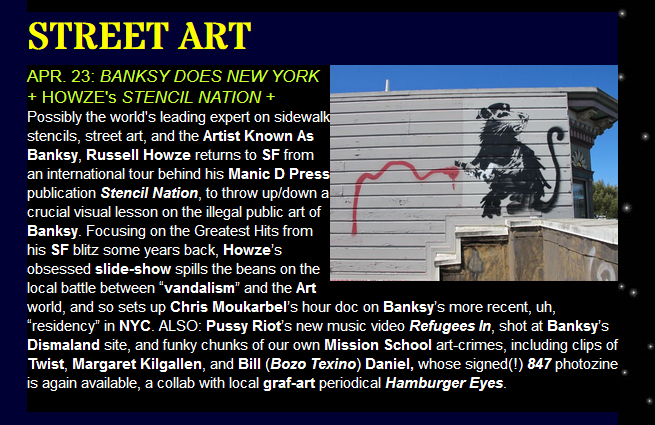The Clipboard (for Bill Graham)
The Clipboard (for Bill Graham, at the Trips Festival)
The Astronaut plugs his cord
into the huge speaker console.
The striped-clad dandy
turns the switch to on.
That was when gravity got turned off.
Amidst the feedback
and strobed landing lights,
feeling light-weight,
I decided to be The Clipboard.
It anchors me
as the scene floats away.
The Clipboard says “This needs doing,”
even though fixing a broken guitar
has no bullet point.
“Protect the doors!”
The Clipboard yells.
The Astronaut has another idea,
and leaves the doors wide open.
The Clipboard pushes back
in order to feel the ground,
while ravers bounce and glow
like waves of light piercing space’s darkness.
Just outside the Hall
The Clipboard has no sway
and the Astronaut is oblivious
As a seagull dozes on a pier,
lulled by a fog horn out in the Bay.
Back inside the Hall
as madness rules this crazy scene,
The Clipboard declares
“This wildness can be controlled
(and still be fun).”
MAD Zeppelin: The Final Steps
Bob Clarke’s 1965 MAD Zeppelin: The Final Steps
Adding the Final Touches, and Hanging It Up (Figures 8-9)
FIGURE 8: THE SAILS
At this point, the only steps left are installing the Mainsail and Forward and After Sails. Oh, and the stringing of the two main parts. I chose to make black and white copies of the sails. Clarke’s original inserts are black and white and one-sided (probably to save money in printing and design costs).
Not sure why Clarke drew the FIGURE 8 illustration for the Small Sails. Their installation is straightforward. As for the Mainsail, the lack of structure for the mast caused the Yardarm and Mainsail to keep falling apart. This assembly needed patience and delicate finger work. As I tried to make this assembly, other parts of the MAD Zeppelin kept falling off.
TIP: Be resigned in the fact that you’ll have to adjust parts after stringing the parts up (see below).
MAD Zeppelin: The Assembly Continues
Bob Clarke’s 1965 MAD Zeppelin: The Assembly Continues
Putting the Ship Together (Figures 4-7)
FIGURE 4: ATTACH DECK UNIT
Looking at the Deck and Hull Units, one can easily see that the outer edges of each part are mostly tabs and slots. Clarke chose not to include an illustrative figure to show these two parts connecting. We will never know why he thought the super-easy Figure 3 needed to be illustrated when I had major struggles putting the Deck Unit into and on the assembled Hull.
I think one difficulty for me was the fact that I made the color copies of the MAD Zeppelin with basic 20lb copy paper. TIP: At this point, I realized that I should have used a heavier stock of paper that was similar in weight to the paper stock of the original insert.
My copy Zeppelin felt very fragile at this stage of assembly, and it got more delicate and precarious for the final bits of assembly. TIP: I had to make the cuts on the tabs (Tabs P and Q) of the Hull and Deck deeper in order to make these pieces insert in a way that didn’t keep the deck from popping up and out. TIP: As you can see from my photos, I put small pieces of tape over the middle connections of these two parts. They kept popping out as I tried to work the end tabs. Not pretty, but it keeps things together.
MAD Zeppelin: The Assembly Begins
Bob Clarke’s MAD Zeppelin: The Assembly Begins
Putting the Balloon and Hull Units Together (Figures 1-3)
INTRO
When the 1965 Worst From MAD No. 8 copy arrived in the mail, I went over to the copier machine at work to make copies of Bob Clark’s MAD Zeppelin insert. I didn’t put much thought into how to make copies. Fortunately, Clarke made all the parts one-sided with perforations that could be folded over to make a second side. I quickly realized that I would have to push the spine of the MAD down a bit to get the parts closest to the gutter to lie flat for the copy.
Yikes! This pushing caused some of the die-cut parts to partially come unattached. There goes a possible grade-reducing defect. Even with moderate pushing, the color copies had a perspective”smear” near the gutter at the magazine’s spine. This can easily be seen in the photo showing most of the Zeppelin’s Balloon Unit (Clarke chose to capitalize the word Zeppelin and its smaller parts throughout his instructions). Look at both parts labelled Tab A and you can see the difference.
I wondered if this would cause the MAD Zeppelin assembly to be a bit off. Since the Balloon was Figure 1 of Clarke’s instructions, I hoped it wouldn’t come out too bad. As we shall see, another part caused the biggest headache, and it wasn’t smeared in the gutter.
Prelude to a MAD Zeppelin [u]
Prelude to a MAD Zeppelin
I assembled Bob Clarke’s 1965 MAD Zeppelin (so you don’t have to).
Here are the complete assembly instructions: Part 1, Part 2, Part 3.
Thus brewed a perfect storm for a geek collector. First, I went online to see if anyone had posted scans of the parts. I also searched for modern photographs of Clarke’s Zeppelin totally strung and assembled. I couldn’t find anything online, but did discover a world of paper object and model making. Cool, but, wow, the Internet had zero MAD Zeppelin images or how-tos. Guess that means I’m buying an expensive intact copy of the ’65 Worst From special and making color copies.
CELLspace Metal Mural Gets Rehomed
Metal Mural Gets Relocated from Mission Local on Vimeo.
As the fate of CELLspace became more clear in early 2014, I knew that I’d have to deal with the murals I’d been facilitating on the building’s facade. The masonite and wood panels were easy enough to take down and store. I had worked directly with the artists so had been in contact with most of them about the fate of their art. One mural went to the Bike Kitchen (they funded its creation). Jet Martinez didn’t want his and didn’t want it to be saved. Many of the artists were OK possibly selling the panels, with some funds going to my Stencil Archive project. Swoon had no desire to save her art and was sad to know the art space was going away.
While in process, the Bryant St. panels came down a bit too early after a tagger painted throw-ups on about three of the panels in July of 2014. I found out later (one of the tagged artists knew the guy) that this person was shit-faced drunk and didn’t even remember destroying three murals. Two of the murals were significant pieces, one being SPIE’s “All our Relations” from 1996.
Alarmed at the vandalism, I got volunteers to quickly take down the panels I had spent months trying to save and rehome. I caught flack from the folks still in the building and had a very terse conversation with the management there about making the space vulnerable and unattractive. Well, it is a warehouse and you can easily redo the windows with your own plywood. As the months advanced, Vau de Vere had many other issues to deal with in the space, and eventually were asked to leave by the developers who planned to build the largest condo building in the Mission.
Pencil it In! April 23 – Stencil Nation at Other Cinema
7 Ways to Get Some Cackalacky, San Francisco Style
Howdy! I’m Russell and I’m a South Carolina native. My roots are all over the Palmetto State, but I’ve called San Francisco home since 1997. After I moved here, I created this very site, which I called a fake travel agency, as a way to entice my Carolina friends and cousins to come out and see me.
If you’re from South or North Carolina, and were lucky enough to get a rare ticket to the Super Bowl, welcome to San Francisco. I don’t think this city compares to any city back home, and you will certainly see more protesting (and here) than you ever have (we aren’t that happy with our mayor, SFPD chief, and all the apparent corruption that helped build these new, shiny skyscrapers). Once you’ve been to Super Bowl City – which is NOT local SF – I thought I’d give you all a list of San Franciscan-related Carolina tourist sites to visit during all that other time you have on your hands. They’re mostly connected to South Carolina. I’m sorry to say that North Carolina gets the short end of the stick here in the City by the Bay.
First, let me go ahead and warn you that most Californians have NO IDEA that there are even TWO Carolinas. And you’ll have to tell folks you’re from the Southeast, because coming from the South in Northern California means you live in Los Angeles, San Diego, etc. And don’t expect to find any decent sweet iced tea here either. A few places get close, but I make my own if I want the real, teeth-aching deal.
OK. Let’s get to some fun, quirky, out-of-the Super Bowl City/Union Square/Fisherman’s Wharf, Carolina-related places for you to drag your lazy ass around to if you’re here for the Super Bowl:
Continue reading “7 Ways to Get Some Cackalacky, San Francisco Style”
Saving Art from the Condo Boom
Various Works: 2050 Bryant, CELLspace
SF Weekly, Know Your Street Art by Jonathan Curiel

On a wall just inside the building formerly known as CELLspace, an artwork delivers a defiant message: “NOT for Sale!” But the message is a lie – the building, whose exterior walls once featured some of the best street art in San Francisco, was sold and is slated for development. Last summer, two volunteers – artist Russell Howze and art editor Annice Jacoby – took down much of the outside art and put it in storage for temporary safekeeping. What’s left on the walls are stickers, tagging, and remnants of art – including faces of Native American men, a monkey with a sign imagining a battle between two well-known street artists (“Hektad vs. Banksy”), and an impressive work by muralist Joel Bergner. Even in its current state, 2050 Bryant’s art potpourri inspires passers-by to take photographs for posterity.
But what about the art that was taken down? Howze, whose own CELLspace work is among the preserved art, and Jacoby are trying to find a patron who will buy the works and display them again. The art includes Bergner’s De Frontera a Frontera, a lyrical, red-splashed work about haves and have-nots in the Dominican Republic, and Icy and Sot’s collaboration with Regan “Ha Ha” Tamanui, Super Hero with Portraits, which has a caped boy standing alongside a gallery of orange-tinged smiling faces.
Though two art collectors outside of San Francisco have expressed interest in buying the works, Jacoby – the former director of performing arts public events at UC Santa Cruz, and the editor of the book Street Art San Francisco: Mission Muralismo – says that, “Ideally, they would remain in San Francisco. They’re part of San Francisco’s fabric. We’re seeking a place where the art will be appreciated, maintained, and available to the public on a long-term basis.”
CELLspace existed from 1996 to 2012, when the art center attracted a roving band of upcoming and veteran artists from San Francisco and around the world. The space is now rented out for parties, yoga classes, art instruction, and the like. CELLspace’s demise hit a lot of people hard. By preserving the work that people once took for granted, Jacoby and Howze are trying to keep the center’s exterior – and its spirit of “anything goes” – alive, even when the red brick building completely disappears as a place of artistic pilgrimage. Jonathan Curiel
Eight-Panel Metal Mural Needs a New Home
Eight-Panel Metal Mural Needs a New Home
By Andrea Valencia, for Mission Loc@l

CELLspace moved from its warehouse on Bryant Street in 2012 leaving behind a mural like no other in the Mission: a large metal structure that spans elegantly across the building’s front windows. It now needs to find a new owner.
Some half-dozen local artists carefully planned and built the copper and steel mural in 2008.
“There was an old facade here, and we wanted it to be different and nicer -unified, – said Jane Verma, one of the artists who added the spiky steel, grass-like element to the mural that was built in the warehouse space.
“There used to be ugly and unwelcoming screens here,” said Russell Howze, an artist and CELLspace volunteer for many years who organized the first art show meant to be displayed with the mural.
When the volunteer-run art collective CELLspace left the building almost three years ago, Inner Mission took up its legacy, but it is now being pushed out by the new development coming to the block bordered by Bryant and Florida between 18th and 19th Streets.
With the inevitable new development, the metal mural will have to be relocated by May.
Howze, the author of Stencil Nation, has been rescuing the murals left behind in Cellspace that were still in good shape. With the help of Annice Jacoby, the editor of Street Art San Francisco: Mission Muralismo, he has managed to find buyers for some of them.
As for the metal mural, Verma is firm about wanting to “keep it in San Francisco. We’d like it to continue to be seen by the public, not on someone’s yard,” she said.
“The developer is interested in art,” Verma said, but the mural might not relate to use project.
Howze said that “this one is the hardest one to save, but the worthiest one.”
It’s not just one big piece of metal, but eight intricate panels. Aharon Bourland designed a bold graffiti pattern in red copper that runs throughout the panels. The copper patina gives the rusty mural a rainbow-like effect.
Tony Verma and Hikari Yoshihara worked on the dripping circles and stones that appear to build in size. Â The fabrication of the mural took about a year, during which time Tom Phillips and Corey Best, CELLspace volunteers, Â helped.
Each one of the eight panels is 10 feet tall and about 3 to 4 feet wide. The central panel designed for the main entrance, which still holds the words CELLspace, is wider. There is also a narrower panel designed for a side door. Removable plywood planters were added on each of the panels.
“I’m impressed the mural stayed for as long as it did,” said Verma. The only missing part in the mural so far is the L in CELLspace.
Howze said the idea of breaking the mural into pieces and handing them out as mementos was discussed among volunteers, but Verma and Howze prefer to keep it one piece.
Unique to this mural’s structure is the space designed underneath each main panel – space designed to be a street art gallery.
“It was meant to have artwork underneath,” said Howze, who launched the first art show with the opening of the metal mural in March 2008. “We had an opening with an art show, Stencilada,” he said.
Today, stencils can still be seen throughout the metal mural. Next door, panels of murals have been taken down and put in storage because tagging took over the artwork on the warehouse walls, said Howze.
Panopticonic Shrugs in the Snowden-net
Almost March and no posts for the new year. I have felt eyes upon all corners of my privacy so haven’t felt too inspired to spend time staring at a screen and writing. I don’t know what think. My mind is blown. I have become introverted. I deleted email accounts. Changed passwords (so many hacked bank and store sites). Have a 2D avatar. If anything, stencils. Meeting up with friends has become important.
With gentrification comes cameras. Cameras on MUNI buses (at least 4, one pointing out the windshield, with one purpose: get evidence and write tickets for cars that park in bus stops). Cameras on bikes (thanks GoPro). Cameras on sidewalks in front of condos, and people constantly staring at cameras -er – cell phones.
The eye stares far and wide!
I am currently reading Glenn Greenwald’s “No Place to Hide” and the book’s statements make me furious. It’s a hard book to read. Fucking NSA! I never thought I’d feel a generation gap, but I feel one now. The Gen Web young adults have a very different idea of what privacy is. And I guess I like to keep it old school, i.e., “butt out of my private life.” Continue reading “Panopticonic Shrugs in the Snowden-net”
